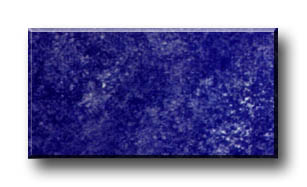Faux
Finishes in
Decorative Painting
The term "faux finish" comes from
the French word "faux" which means "false", "resembling
or imitating something else".
In decorative painting, using
paints, mediums, brushes and other tools, natural materials
such as marble, wood, stone, leather, tortoiseshell and malachite
to
name a few, can be successfully imitated. Other
less common but beautiful finishes include mother-of pearl, expensive
woods like mahogany, burl, ivory and even linen. The imitation
of an "aged" look or effect is also very common in
contemporary decorative painting. Techniques used to "age" a
project include antiquing, crackling, distressing, flaking paint
and verdigris.
  
With experimentation,
a decorative painter can apply the same techniques used
in creating a faux finish
to create various "fantasy finishes" where the end
result does not resemble any natural material or effect but produces
a wonderful decorative effect.

Fantasy or reality? Faux
lapis lazuli in hues of blue.
|